The x−t graph of a particle undergoing simple harmonic motion is shown in figure. Acceleration of particle at t=4/3s is
 Solution in Gujrati
Solution in Gujrati
(a)√332π2cm/s2
(b)−π232cm/s2
(c)π232cm/s2
(d)−√332π2cm/s2
The correct Answer is:D
Displacement equation from graph
X=sin(π4t)[∵ω=2πT−2π8=π4]
Acceleration a=−π216sin(π4t)
Topper's Solved these Questions
- SIMPLE HARMONIC MOTIONBOOK - ALLEN CHAPTER - SIMPLE HARMONIC MOTIONEXERCISE - MCQ s one or more than one correct answers
5 Videos
- SIMPLE HARMONIC MOTIONBOOK - ALLEN CHAPTER - SIMPLE HARMONIC MOTIONEXERCISE - Paragraph
3 Videos
- SIMPLE HARMONIC MOTIONBOOK - ALLEN CHAPTER - SIMPLE HARMONIC MOTIONEXERCISE - Exercise-05 [A]
39 Videos
- RACEBOOK - ALLEN CHAPTER - RACEEXERCISE - Basic Maths (Wave Motion & Dopplers Effect) (Stationary waves & doppler effect, beats)
25 Videos
- TEST PAPERBOOK - ALLEN CHAPTER - TEST PAPEREXERCISE - PHYSICS
4 Videos
Similar Questions
Three simple harmonic motions in the same direction having the same amplitude and same period are superposed. If each differ in phase from the next by 45∘, then
View SolutionA uniform thin cylindrical disk of mass M and radius R is attaached to two identical massless springs of spring constatn k which are fixed to the wall as shown in the figure. The springs are attached to the axle of the disk symmetrically on either side at a distance d from its centre. The axle is massless and both the springs and the axle are in horizontal plane. the unstretched length of each spring is L. The disk is initially at its equilibrium position with its centre of mass (CM) at a distance L from the wall. The disk rolls without slipping with velocity →V0=vacV0ˆi. The coefficinet of friction is μ.
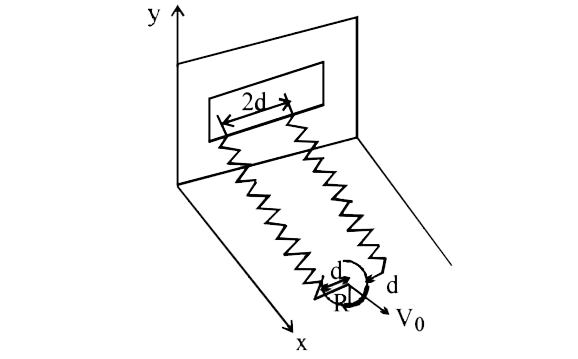
The net external force acting on the disk when its centre of mass is at displacement x with respect to its equilibrium position is.
View SolutionIf a spring has time period T, and is cut into (n) equal parts, then the time period of each part will be.
View SolutionThe frequency of a radar is 780 MHz. After getting reflected from an approaching aeroplane, the apparent frequency is more than the actual frequency by 2.6 kHz. The aeroplane has a speed of
View SolutionChoose the correct statement:
View SolutionThe acceleration displacement graph of a particle executing simple harmonic motion is shown in figure. The time period of simple harmonic motion is
View SolutionThe acceleration-displacement (a−X) graph of a particle executing simple harmonic motion is shown in the figure. Find the frequency of oscillation.
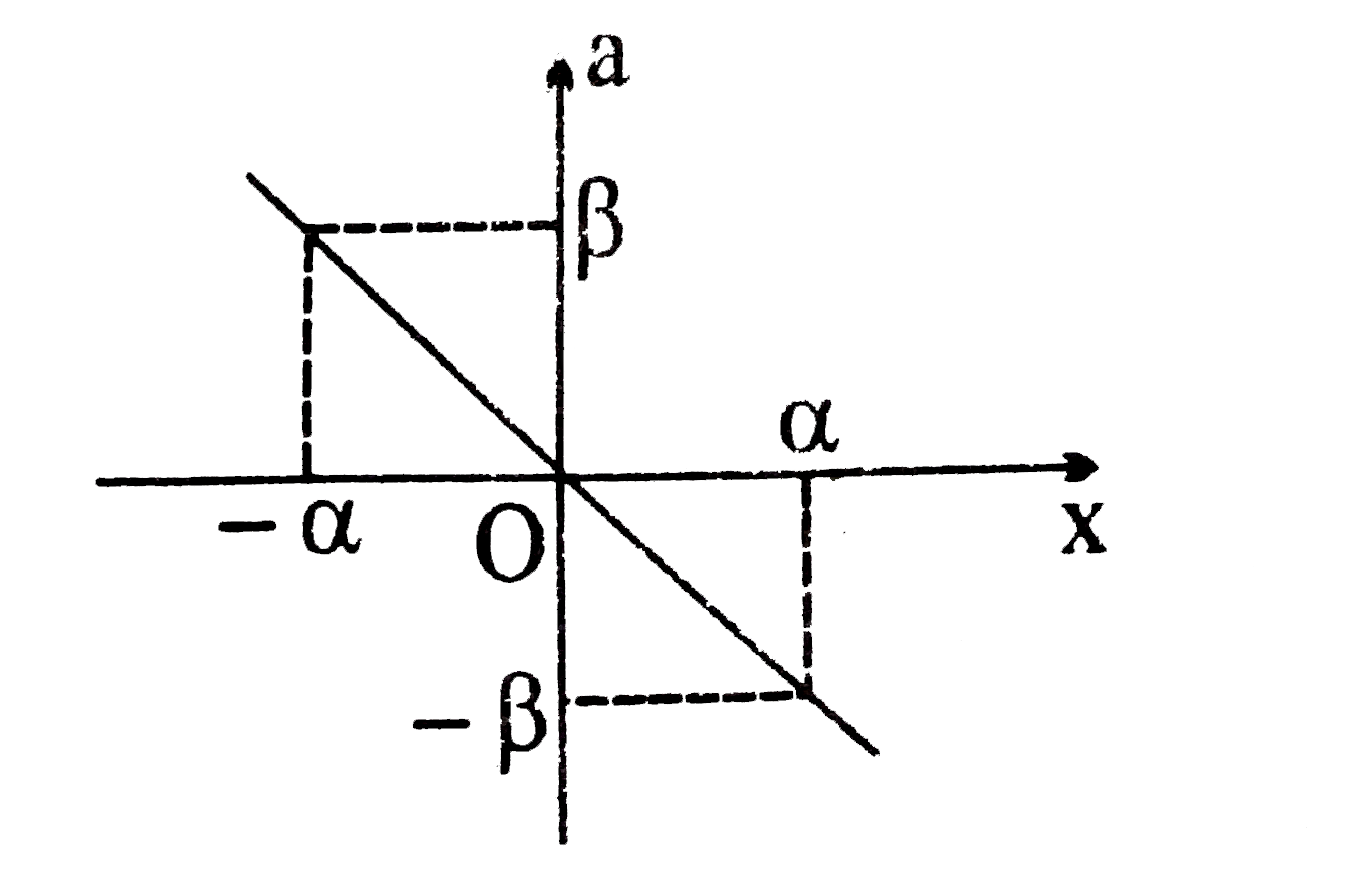
View SolutionThe x-t graph of a particle undergoing simple harmonic motion is shown below. The acceleration of the particle of t=4//3s is
View SolutionThe x−t graph of a particle undergoing simple harmonic motion is shown in figure. Acceleration of particle at t=4/3s is

View SolutionThe x−t graph of a particle undergoing simple harmonic motion is shown below. The accelertion of the particle at t=4/3s is
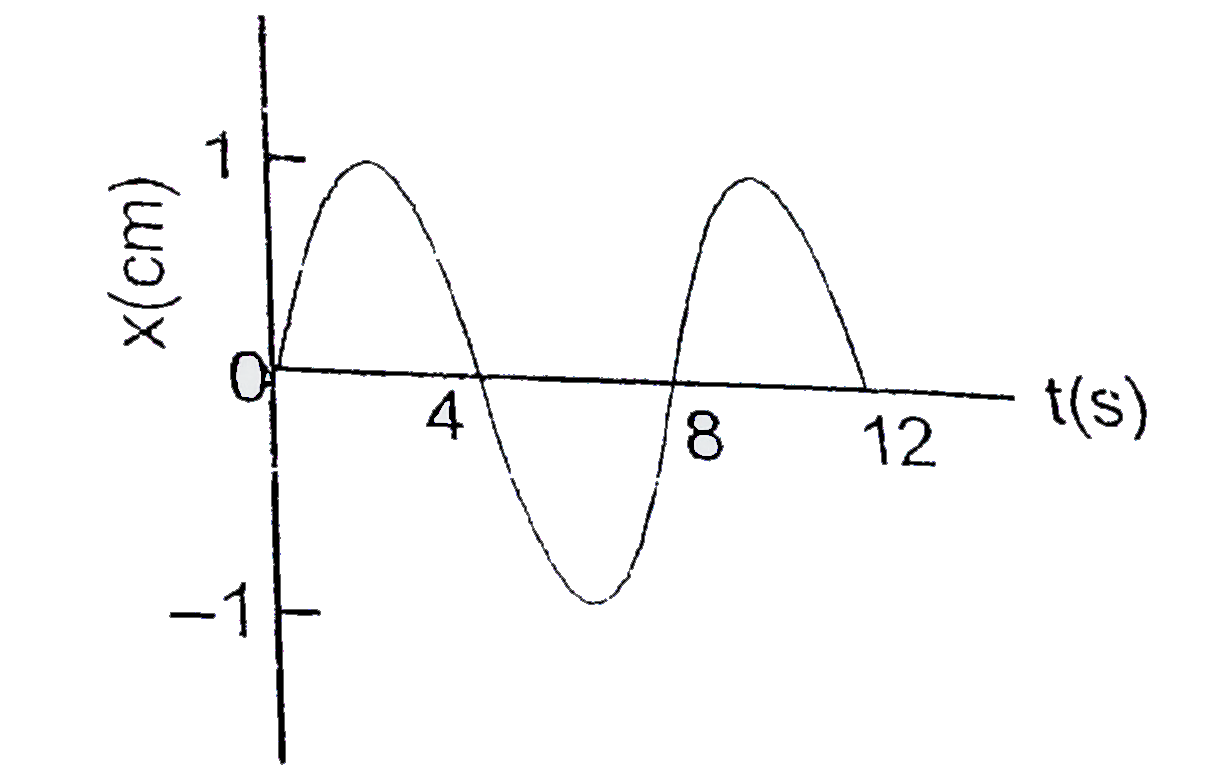
View Solutionचित्र 3.54 में किसी कण की एकविमीय सरल आवर्ती गति के लिए x−t ग्राफ दिखाया गया है (इस गति के बारे में आप अध्याय 14 में पढ़ेंगे) समय t=0⋅3 सेकण्ड पर कण के स्थिति वेग व त्वरण के चिन्ह क्या होंगे ?
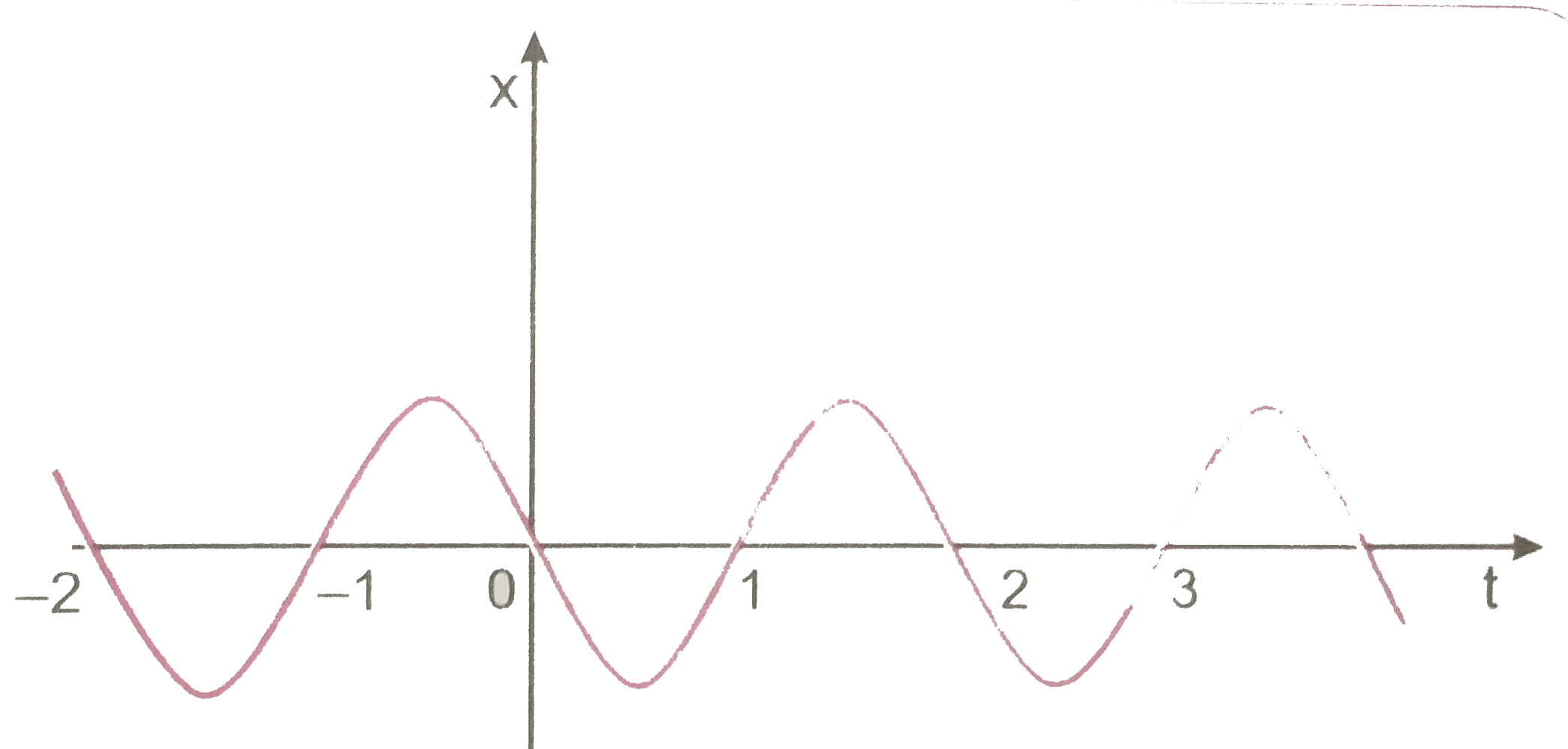
View SolutionThe x - t graph of a particle undergoing simple harmonic motion is shown . The acceleration of the particle at t=4/3 is
View SolutionThe x-t graph of a particle undergoing simple harmonic motion is shown below. The acceleration of the particle at t = 2/3s is
View SolutionThe x-t graph of a particle undergoing SHM is as shown in figure. The acceleration of the particle at t=2/3 is
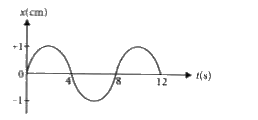
View SolutionThe x-t graph of a particle undergoing simple harmonic motion is shown in figure. Acceleration of particle at t = 4//3 s is
View Solutionसरल आवर्त गति करते हुए किसी कण का x - t ग्राफ चित्र में दर्शाया गया है।
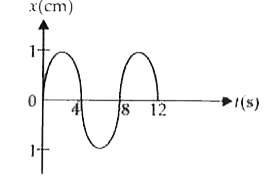
t=43 सेकण्ड पर कण का त्वरण क्या होगा?
View Solution
